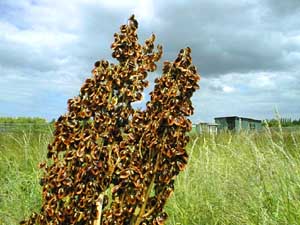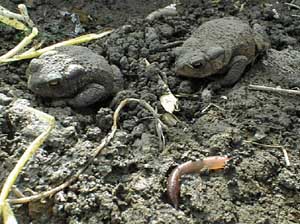|
||||||
![]()
The wildlife of Burnside Allotments
Burnside Allotments occupies 3.32 hectares of land relatively close to the busy Cambridge ring road near the end of Mill Road. Despite this it forms forms part of a large area of open space that separates Cambridge City from Cherry Hinton village. See How to find Burnside Allotments.The north of the site is bordered by Snaky Path (as it is known locally) and Cherry Hinton Brook, a clear chalk stream rich in wildlife, that runs from Cherry Hinton Hall gardens to Coldham’s Common. This pleasant green area forms part of the ‘East Cambridge Wildlife Corridor’ defined and protected according to the Cambridge Local Plan.
 |
The allotment site is bordered on it’s east side (adjacent St. Bede’s School playing fields) by a mature mixed hedgerow that offers good nesting and feeding sites for birds and insects (may have been the old field boundary when this are was effectively countryside). The hedge is composed mainly of hawthorn in addition to blackthorn, elder, dog-rose, field maple, dogwood, viburnum species, bramble, ivy and various non-native species that may have been planted deliberately or seeded in (e.g. Sorbus species, Malus species, etc.). |
Hedges are situated around other parts of the perimeter fence providing a combination of security, wildlife habitats and shelter to the allotments. Efforts have been made to enhance the wildlife and security by planting a new hawthorn and field maple hedge in January 1999.
At the edges of the site adjacent to the grass road ways and hedgerow a strip of rough grass and scrub forms a more permanent area for wild plants to thrive in a ‘woodland edge’ effect. One area of rough grass occupying a few disused plots has been identified as an area to leave and manage for wildlife. Management could involve mowing the grass in July, August or later (and remove cuttings) to reduce the soil fertility and encourage the growth of chalk grassland plants characteristic of the area.
Birds Allotments are recognised as particularly important for birds especially song thrushes that have been in national decline in recent years. The variety of well used (disturbed soil) and more overgrown plots (weed seeds, brambles, etc.) provides an excellent feeding site for birds. Bird species seen on the allotments include blackbird, song thrush, robin, starling, house sparrow, great tit, blue tit, willow warbler (heard singing in hedgerow), pied wagtail, jackdaw, collard dove, wood pigeon, magpie, kestrel, mallard, goldfinch (in small groups feeding on weed seeds), chaffinch, linnet, cuckoo, green woodpecker, skylark, and more.
 |
Amphibians The most
commonly seen amphibian is the aptly named common toad, which is very numerous especially
in damp places such as piles of wood or compost heaps (turning over compost heaps must be
done with care!).There are also common frogs on site.
Mammals that share Burnside Allotments with gardeners include fox, rabbits, field mice, Muntjac deer. |
Insects Butterfly species include small tortoiseshell, peacock, red admiral, gatekeeper (very numerous in July feeding on marjoram, lavender, curry plant, etc.), common and large white, orange tip and brimstone. Allotment flowers and fruit bushes together with bramble bushes along the perimeter hedge offer excellent feeding sites for many insects.
The rich wildlife of Burnside allotments is partly due to its proximity to Cherry Hinton Brook and the water-filled chalk pits formerly worked to provide material for the now disused cement works. The brook near the allotments is one of the best, and sadly few, places in the Cambridge area to view the water vole. In addition brief views of resident kingfishers can be seen along the brook adding to this area’s ‘countryside’ atmosphere. Migrant birds such as chiff chaffs, willow warblers and sedge warblers can often be heard in summer from Burnside street and various waterfowl and other birds (some quite rare) are resident or visitors to the water pits and their margins. In spring great-creasted grebes can be seen carrying out their characteristic mating display on the water.
Latest update K. Jordan 03/01/01